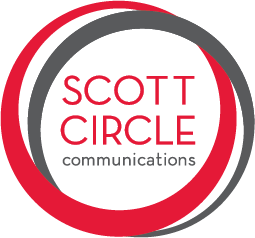Monitoring, Measurement and Metrics: Tackling the Media Reporting Landscape
Monitoring, measurement and metrics. Keeping tabs on the media landscape allows communications pros to follow what is being said, where a client may fit in coverage, identify key influencers or experts and understand the types of stories that are picked up. Media monitoring and reporting often only tells half the story on its face, but it takes a trained eye to pick out the themes, trends and key findings. The vast amount of information available can be overwhelming, especially when looking to present to a client, but fear not - we have put together a primer to help navigate the media monitoring landscape!
Establish Success and Understand Your Client’s Goals
Start off by asking questions, establish what success looks like to the client and what their goals from media engagement are. Is the client looking to gauge interaction on a certain topic, track brand mentions, follow competitors’ coverage or identify news opportunities where they could contribute to the conversation? Understanding client needs will inform decisions in media monitoring that lead to successfully meeting goals.
Choose Your Platform
There are a multitude of platforms that provide monitoring and analytics services covering all mediums, regions and trades. Options include all-encompassing solutions, like Cision and Muckrack, social platforms like Sprout Social, and keyword alert aggregators like Talkwalker Alerts or Feed.ly, - and everything in between. It is important to find the system that provides the best ability to accurately collect clips and provide analytics that are useful to the client. If the project is primarily on social media, Sprout Social would be a good option, while print and online campaigns may be better suited to Cision, Muckrack or Feed.ly. A mix of platforms is generally advised as it can help assure that all stories are pulled in and do not fall through the cracks.
Create a Baseline
It is always harder to add data after the fact, so decide what you ultimately want to present to the client to demonstrate success. Before monitoring begins, work with the client to identify key terms related to their goals. Which words, phrases, themes or individuals are important? Set up monitoring terms, preferably two weeks to a month in advance to create a baseline. This baseline provides a starting point for comparison down the line.
Manage Expectations
Managing a client’s expectations is critical to helping find their space in the crowded media landscape and understanding what success realistically looks like. If the client wants to reach a niche audience, the media that will deliver the best exposure to the target demographic may be a smaller publication. Identify quality outlets and reporters who engage with the target audience, not necessarily those with the biggest reach.
Structure The Report
Create an outline for the report, visualize how you will organize the metrics and understand how you will communicate the report. Use a combination of descriptive writing, charts graphs and tables to explain your coverage. The way you represent the data should provide an overall benefit to the presentation, so identify the best chart or graph to demonstrate each section of the report. Laying the groundwork by identifying keywords and selecting metrics that accurately represent findings will result in insightful reporting.
Think Like Your Client!
When you present your findings to the client, eliminate jargon or industry specific language when communicating data. Make information easy to understand and digest by explaining coverage clearly using simple language. If you can’t easily explain what a chart is showing, your client won’t understand either. Furthermore, understand what matters to the client: how will the coverage impact them and why is it impactful? The how and the why informs analysis of coverage and recommendations for next steps.
With a plethora of platforms and publishing mediums it is natural to feel daunted by the sheer size of the task, but don’t let the numbers get the better of you. Approaching media monitoring with a plan will yield helpful information and reveal key trends. Media monitoring tells a story in numbers, it is up to you to translate findings into language the client can understand and demonstrate the value of your hard work.
